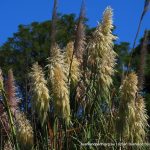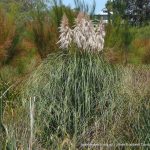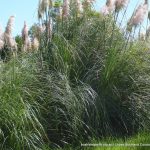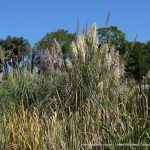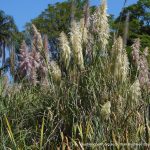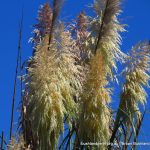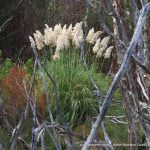Pampas Grass
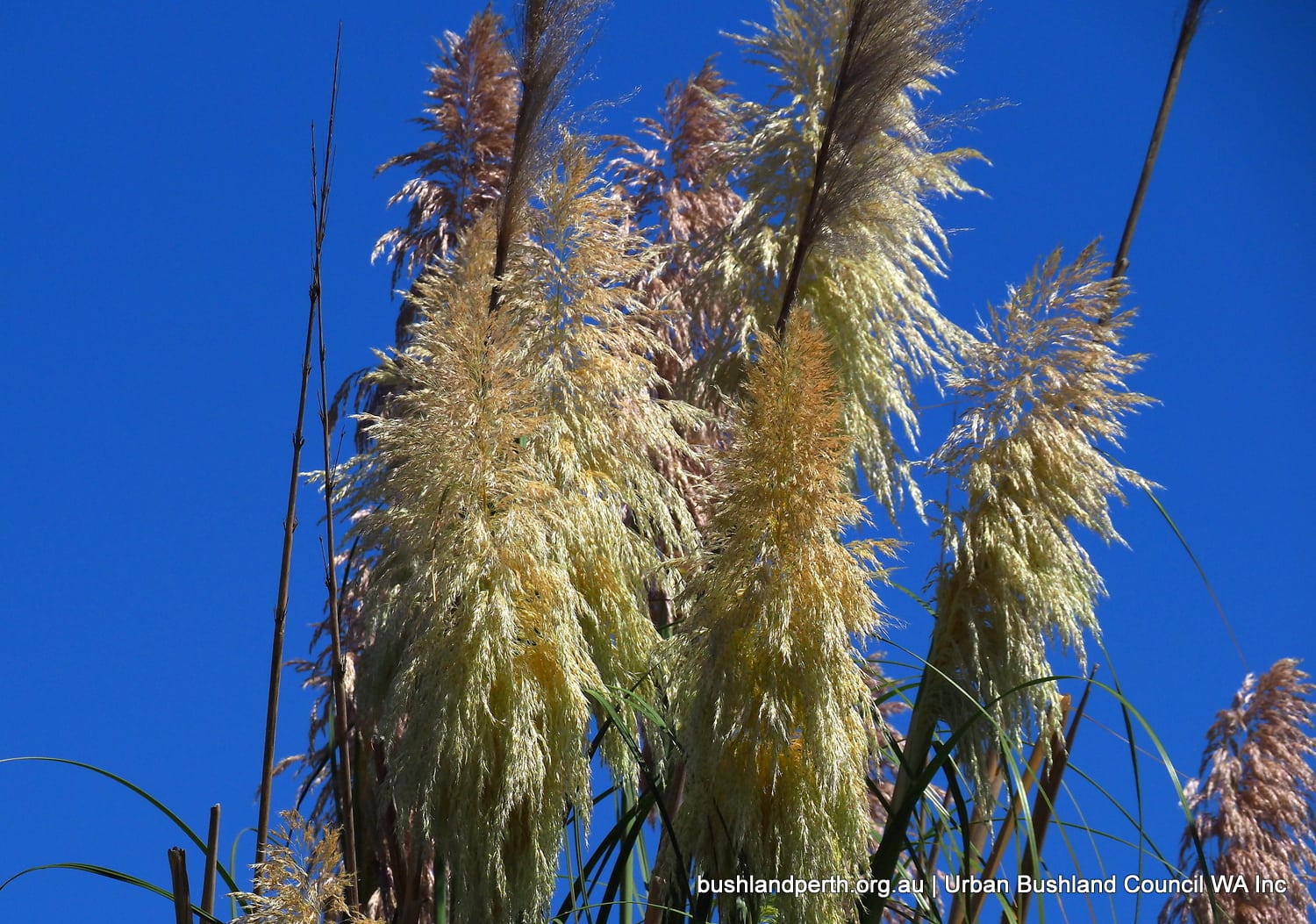
Common name
Pampas Grass
Scientific Name
Cortaderia selloana
Type of plant
Grasses (Family Poaceae)
About this weed
Although a grass this weed can grow to 4 m in height and is often found in wetter areas especially on swampy ground. It was originally introduced as a garden specimen from South America and also as a windbreak and fodder for stock. This grass is a Pest Plant under the Agriculture and Related Resources Protection Act 1976 and has therefore documented control strategies in place.
Description
Pampas Grass is a very large, tussocky, perennial with leaves up to 1 metre long. This weed can grow to a height to 2 to 4 m. The flower heads are held aloft above the grass. They are large attractive feathery, silvery plume-like panicle to 3 m tall and produce vast numbers of viable seed from each flower. Its seed is dispersed by wind and water and if the rhizomes are disturbed then the plant can easily spread. Seeds are able to disperse large distances. Seed can germinate under a wide range of conditions, however germination is highest in sandy soils, with available water and under shaded conditions compared with complete light. Recruitment and survival of seedlings is enhanced by soil disturbance and can be impacted by presence of generalist herbivores.
Impact on Bushland
This weed is a serious weed of wetlands and is capable of altering vegetation structure and decreasing diversity of invertebrate and vertebrate fauna. Often found in open sunny sites which receive additional moisture.
Location
It has naturalised in sunny, swampy sites from Perth to Albany and has the potential to become a serious weed of wetlands. It prefers wetlands or damp areas in white or black peaty sand.
Priority for removal
High: causes acute disruption of ecological processes, dominates and/or significantly alters vegetation structure, composition and function of ecosystems.
Management (hand)
Cut out small plants, remove uprooted plants to avoid them resprouting. Remove flower heads and slash and burn clumps.
As a Pest Plant under the Agriculture and Related Resources Protection Act 1976 and has therefore documented control strategies in place.
Management (herbicide)
Treat young plants with 13ml/L Fusilade Forte + spray oil or for generic fluazifop-p (212g/L active ingredient) 8mL/L + spray oil and may require more than one application. Alternatively foliar spray glyphosate at 4%. Read the manufacturers’ labels and material safety data sheets before using herbicides. For optimal treatment spray from July to November.
As a Pest Plant under the Agriculture and Related Resources Protection Act 1976 and has therefore documented control strategies in place.
Flowering month/s
January, February, March, April, December, Opportunistic
Flower colour/s
Pink, White
Information source
https://florabase.dpaw.wa.gov.au/browse/profile/277
Additional information
https://florabase.dpaw.wa.gov.au/weeds/swanweeds/
Hussey, B.M.J., Keighery, G.J., Dodd, J., Lloyd, S.G. and Cousens, R.D. (2007) Western weeds. A guide to the weeds of Western Australia, Second Edition, The Weeds Society of Western Australia, Victoria Park, Western Australia.
https://www.agric.wa.gov.au/pests-weeds-diseases/weeds/pest-plants

